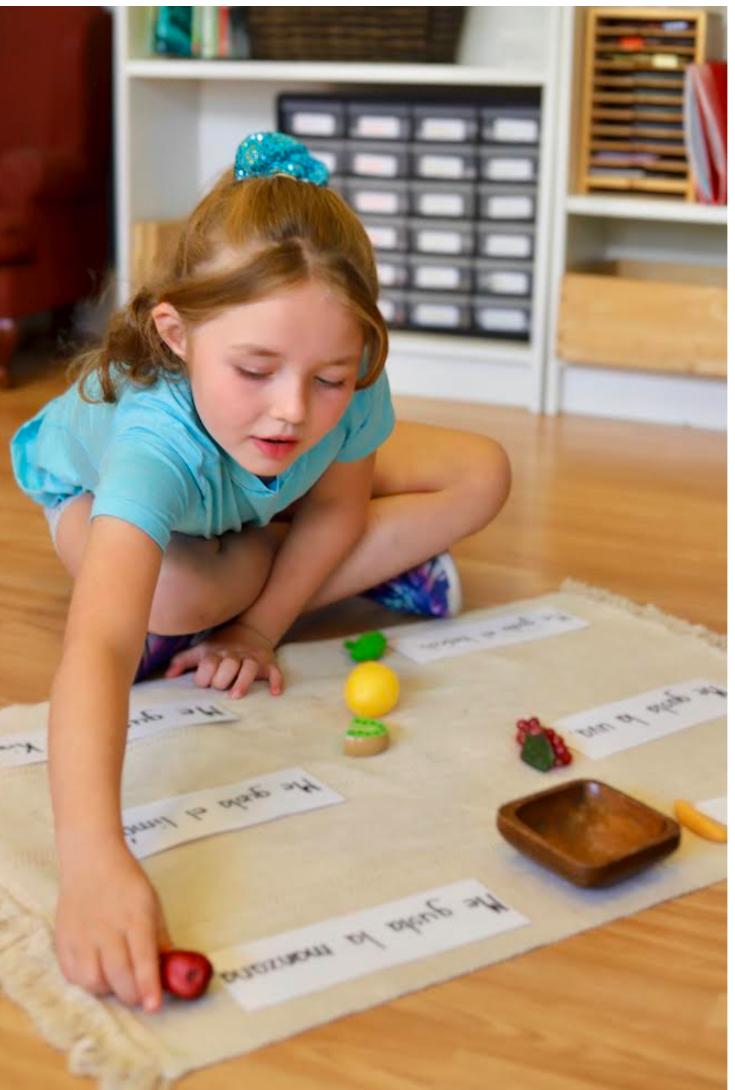Why Montessori?
What Is A Bilingual Classroom?
A Montessori bilingual classroom is a rich learning environment where children are introduced to language, math, science, geography, sensorial, practical life and art in both English and Spanish (or another foreign language), with emphasis on the later language.
At Casa del Niño, our Spanish Montessori program was designed by Ms. Mariela Barnes, a certified Montessori teacher with a master’s degree in bilingual education. Our program is based on the principle that teachers speak in only their native language while educating students.
How Our Classrooms Work
Our Pre-Primary and Primary classes (2-5 yrs.) are full immersion classrooms with two native Spanish speakers born and raised in Latin America. The Lead Teachers present all Montessori subjects (i.e. language, math, science, geography, sensorial, practical life and art) in Spanish only.
Our Lower Elementary Class (5-8 yrs.) is a bilingual classroom where the mix of English/Spanish instruction varies depending on each student’s ability, since each student has an individual curriculum. Typically, about 70% of the child’s work is in Spanish. This includes reading, writing, spelling, reading comprehension, science and social studies taught one-on-one with the teacher, as well as group Circle time where students have an opportunity to share what they’ve learned, in Spanish.
Our overall teaching philosophy is that teachers should instruct students using the teacher’s native language. In addition to one-on-one lessons, this includes group Circle time where the kids learn songs, tell stories and share their knowledge. It takes approximately six years of bilingual education for a student to become fully bilingual.
Frequently Asked Questions About Our Bilingual Classrooms
WHAT IS THE BEST AGE TO INTRODUCE A CHILD TO ANOTHER LANGUAGE?
The earlier a child learns a new language, the better. Studies have shown that children who learn a new language before the age of five are able to learn with the same part of the brain used in speaking their mother tongue. Younger children do not have inhibitions and can learn to speak a second language naturally, and with native pronunciation.
WILL A SECOND LANGUAGE INTERFERE WITH MY CHILD’S ENGLISH ABILITY?
In most cases, learning another language enhances a child’s English ability. Comparing two language systems aids with the understanding and use of each. Reports have demonstrated that children who have learned a second language earn higher SAT scores than students who have not learned a second language.
IS IT HARDER FOR A CHILD TO ACQUIRE TWO LANGUAGES AT ONCE?
There is no evidence to suggest that it is harder for a child to learn two languages at the same time. A child does not have to be exceptional to be bilingual, as long as the child is exposed to two languages, independently, throughout early childhood. The key is to keep each language system independent.
